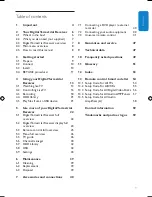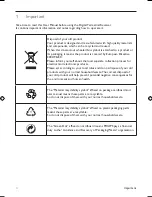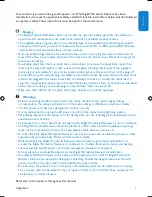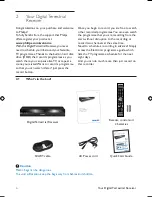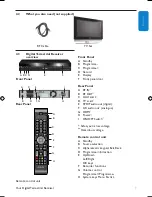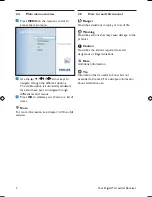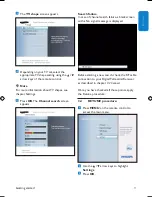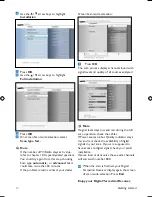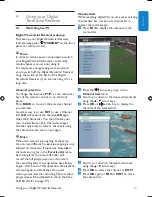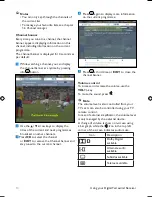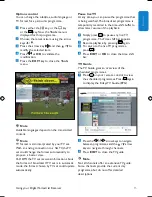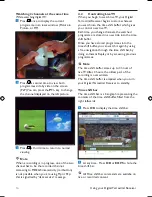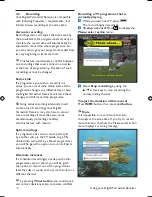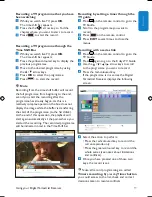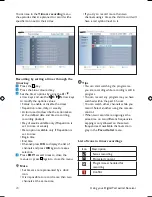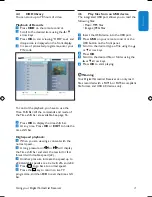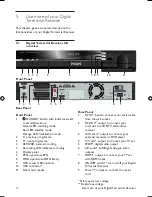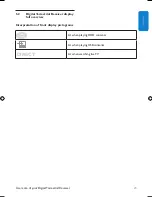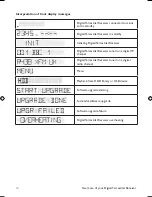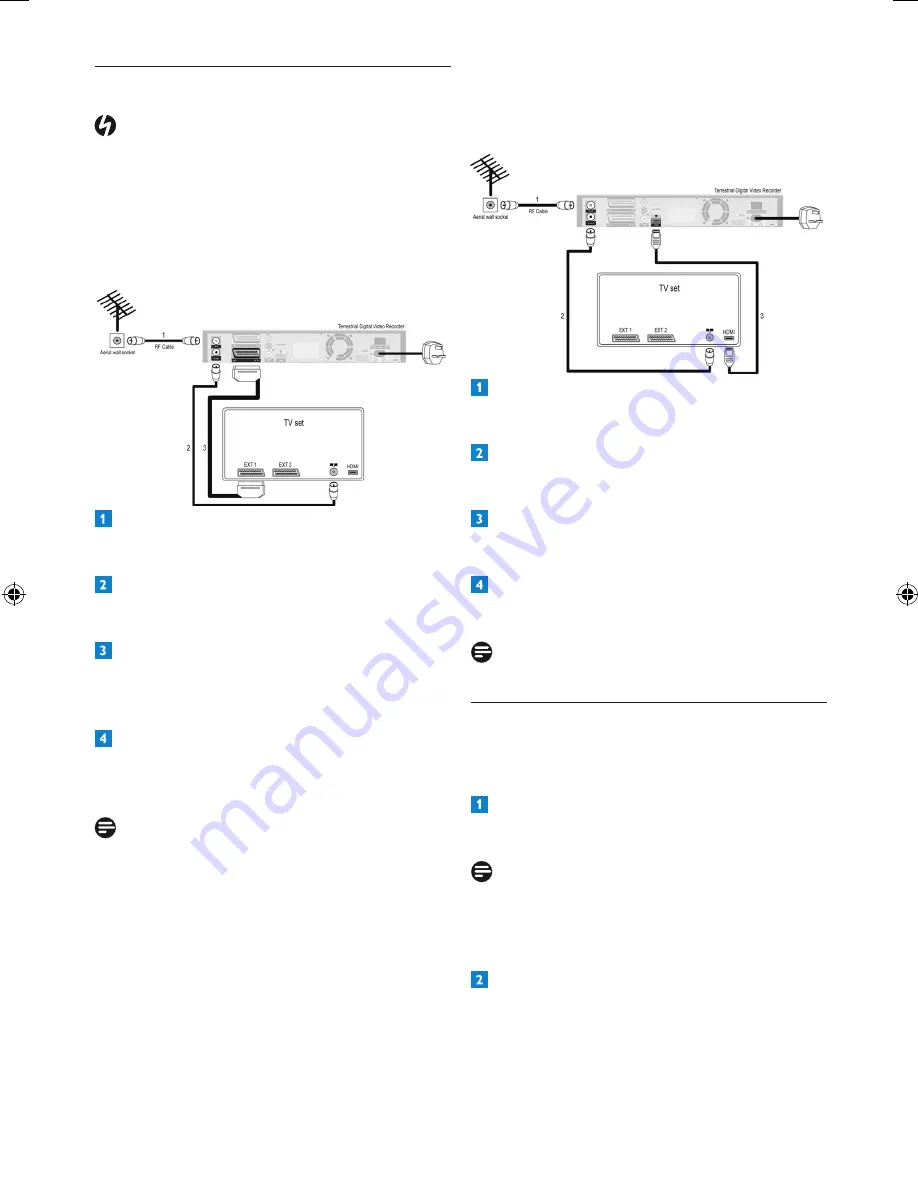
Getting started
10
3.2
Connect
Danger
Risk of electric shock!
Make sure all the devices are disconnected from
the mains before making any connections.
SCART connection
Use this connection if your TV set is not fitted
with a HDMI input.
Connect the aerial cable from the wall
socket to the
RF IN
socket at the rear of
the Digital Terrestrial Receiver.
Connect the
RF OUT
socket at the rear
of the Digital Terrestrial Receiver to the RF
input of your TV set using a RF cable.
Connect the supplied scart cable to the
scart input of the TV set and to the
TV
scart
socket at the rear of the Digital Terrestrial
Receiver.
Plug your TV set to the mains. Do not plug
your Digital Terrestrial Receiver yet!
Note
The fan extracts hot air from the device:
Check that there is enough place and
fresh air around the device to avoid
overheating.
HDMI connection
Use this connection if your TV set is fitted with
a HDMI input.
Connect the aerial cable from the wall
socket to the
RF IN
socket at the rear of
the Digital Terrestrial Receiver.
Connect the
RF OUT
socket at the rear
of the Digital Terrestrial Receiver to the RF
input of your TV set using a RF cable.
Connect a HDMI cable to the HDMI input
of the TV set and HDMI socket at the rear
of the Digital Terrestrial Receiver.
Plug your TV set to the mains. Do not plug
your Digital Terrestrial Receiver yet!
Note
The HDMI cable is not supplied
3.3
Install
Before you start installation, make sure you have
made all the required connections.
Switch on your TV set and select the correct
source (refer to the user manual of your TV set).
Note
The display format being managed by the Digital
Terrestrial Receiver, set your TV to “full screen”
or to the similar equivalent setting.
Plug the power cord into the mains and
set the switch at the rear of the Digital
Terrestrial Receiver to position
ON
.
DTR 7510 200910.indd 10
16/10/2009 17:40:49
Summary of Contents for DTR 7510
Page 2: ... 2 ...



